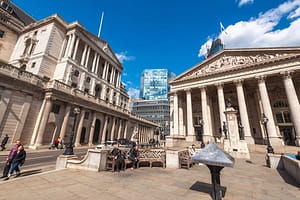The US is more attractive than Europe, despite more expensive valuations Following on from a weak first-half performance, the summer bond rally proved little more than a mirage. In September, the market simply picked up where it had left off.
For the year to-date, almost all bond segments and asset classes have suffered historic declines. Disruption has been even greater in higher-rated bonds than in the high-yield segment.
Kyle Kloc, Senior Portfolio Manager at Fisch Asset Management in Zürich said, “High yield bonds are currently down by about 14 percent globally (as measured by the ICE BofA ML Global High Yield Index hedged in euro).
“If ending 2022 at a similar level, historical analysis would conclude that this has been one of the worst years ever. Naturally, investors gazing at falling prices are wondering when it will be worth taking on or increasing their high-yield exposure.
“Inflation remains high, resulting in rate hikes and wider spreads; so, caution remains the watch word. That being said, we believe that it is time to consider taking on some high-yield exposure. Spreads may well widen further in the short term but already offer attractive entry points, for those with a medium-term perspective.
“Although high-yield valuations are more demanding in the US than in Europe, we regard the US as more attractive.
“The rationale is that higher energy prices are positive for US high yield bonds and negative for their European counterparts due to the predominance of the energy sector in the US.
“This includes oil & gas producers that are currently highly profitable. Meanwhile, electricity and gas prices have risen significantly more in Europe than in the US.
“This is already eating into European companies’ profit margins, or even sending them into negative territory. Generally speaking, we currently prefer higher quality and are overweighting the energy, metals and telecoms sectors.
“Conversely, we are underweighting retailers and autos, due to weak consumer confidence and the belligerently high inflation levels. We advise caution on short-dated bonds, due to the refinancing risk, as well as on issuers exposed to European energy prices.
“Avoiding the implications of a severe recession could be crucial for those investing in the high-yield market. But a recession, of some degree, appears inevitable.
“Even so, companies’ fundamentals are sufficiently robust that the high-yield market could navigate a relatively moderate downturn. Their order books are mostly full, and their financing is generally solid. Higher interest rates should not lead to any significant increase in default rates, at least above the CCC rating level. In short, we are not ready to advocate blanket exposure, but nor do we see any reason to panic.
“For long-term investors, at least, a substantial correction to the extent we have seen so far in 2022 invariably conjures up buying opportunities.”






Leave a Comment